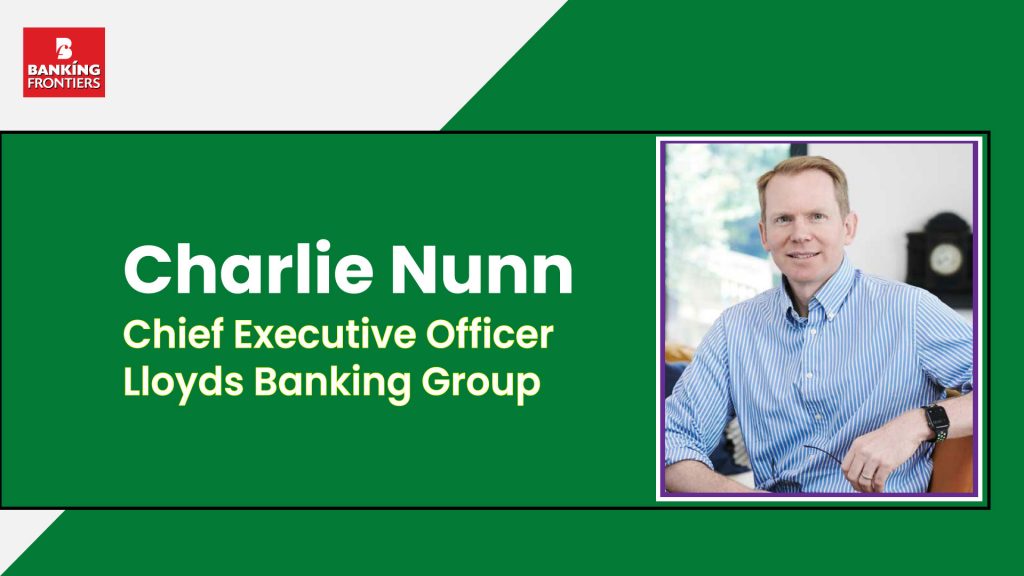The Group has recently earmarked £1 billion for tech spend:

Early this year, Britain’s Lloyds Banking Group announced that it plans to spend £1 billion over the next 3 years on overhauling and enhancing its technology infrastructure and self-service capabilities. The Group’s CEO Charlie Nunn said the strategy is to move 20% of its applications to the cloud by 2024 and decommission over 15% of legacy applications.
Nunn, who joined the group in August 2021 from HSBC, is primarily focusing on increasing the Group’s digitally active customers by more than 10% by 2024 to more than 20 million. He has articulated that this will be done by adopting an agile software delivery method and using data and analytics to deliver personalized engagement, offers and pricing. He also wants to counter the criticism that the Group’s on-premises’ systems are ‘not fit for purpose’.
The Group, formed through the acquisition of HBOS by Lloyds TSB in 2009, is one of the UK’s largest financial services organizations. It has over 30 million customers and 65,000 employees. It operates under several brands, like Lloyds Bank, Halifax, Bank of Scotland, and Scottish Widows. Notably, it has more than 18 million digitally active users.
MASS-AFFLUENT CUSTOMERS
Nunn’s strategy includes a plan to use digital capabilities to create products for the mass-affluent customers with over £75,000 in liquid assets. He is also aiming at the expansion of the Group’s SME proposition through merchant services, trade, cashflow lending, and broader, value-added services like supporting SME transition to net zero. It has plans to reduce central functions and office overheads using automation, process simplification, and moving to hybrid working. The target is to cut the office footprint by 30% by 2024.
Also by 2024, legacy applications will be cut by 15%, while the ‘run and change’ technology costs will be down by 15%. Alongside, some 20% of its applications will be moved to public and private cloud platforms, and 60% of its new business lending decisions will be automated.
Nunn has said in this context: “The reality is if we weren’t to continue to innovate, improve and invest in our business then there is a downside risk either to cost inflation exceeding the pace in which our revenues grow, or alternatively losing share. We haven’t built the investment case on that. The investment case is very clearly on what we need to do to progress on our revenues and efficiency.”
INTELLIGENT AUTOMATION
The Group has consciously opted for intelligent automation – a nomenclature for the pairing of robotics and other technologies to handle repetitive tasks, support staff and simplify the customer experience. It has liberally deployed tools such as virtual assistants and messaging technology.
The Group has created a group within its technology team to build robots with a focus on creating capacity and delivering key benefits such as customer service, colleague satisfaction, risk reduction, and fraud prevention. Extensive use of RPA allows it to respond in an agile way to peaks in demand, like the Bounce Bank Loans and Mortgage Repayment Holidays. The Group has also developed a system that converts spoken and written words, like calls, messages and e-mails, into machine readable text, and then applies machine learning to analyze, gain insights and give a better understanding of what action should be taken next.
And during the pandemic, when there was unprecedented demand for services such as Mortgage Repayment Holidays, a dedicated team created an end-to-end design to use robotics and developed a system whereby customers were directed via channels to seek and obtain a new Mortgage Repayment Holiday process. Using the system, the Group could process some 4 million documents through a Document Upload capability and save around £3.2 million in use of paper and processing time.
The Group, way back in 2018, had earmarked £3 billion for digital transformation. It was in fact this strategic decision that helped it to have the 18 million digital active users, including some 12.5 million mobile app users. And its decision to move to cloud has led to a 30% reduction in the time it takes to deliver new features, while more than 50% of customer transactions are now being enabled using machine learning technology.
USING CLOUD
Now, having spent more than £4 billion against the earmarked £3 billion and having reached a level of consolidation, the Group is proposing to broaden its self-service capabilities. It is also increasingly becoming a data-driven organization having achieved high levels of personalized customer interactions.
The Group’s digital channel is now its most prominent, with 75% of products originating digitally. Without doubt, the Group has made all the right investments when it comes to its march towards digital – it is today the UK’s largest digital bank and is able to capture a larger market while ensuring the loyalty of existing customers.
______________
This article has been compiled based on publicly available information on the web, particularly the bank’s own website.
Read more-







